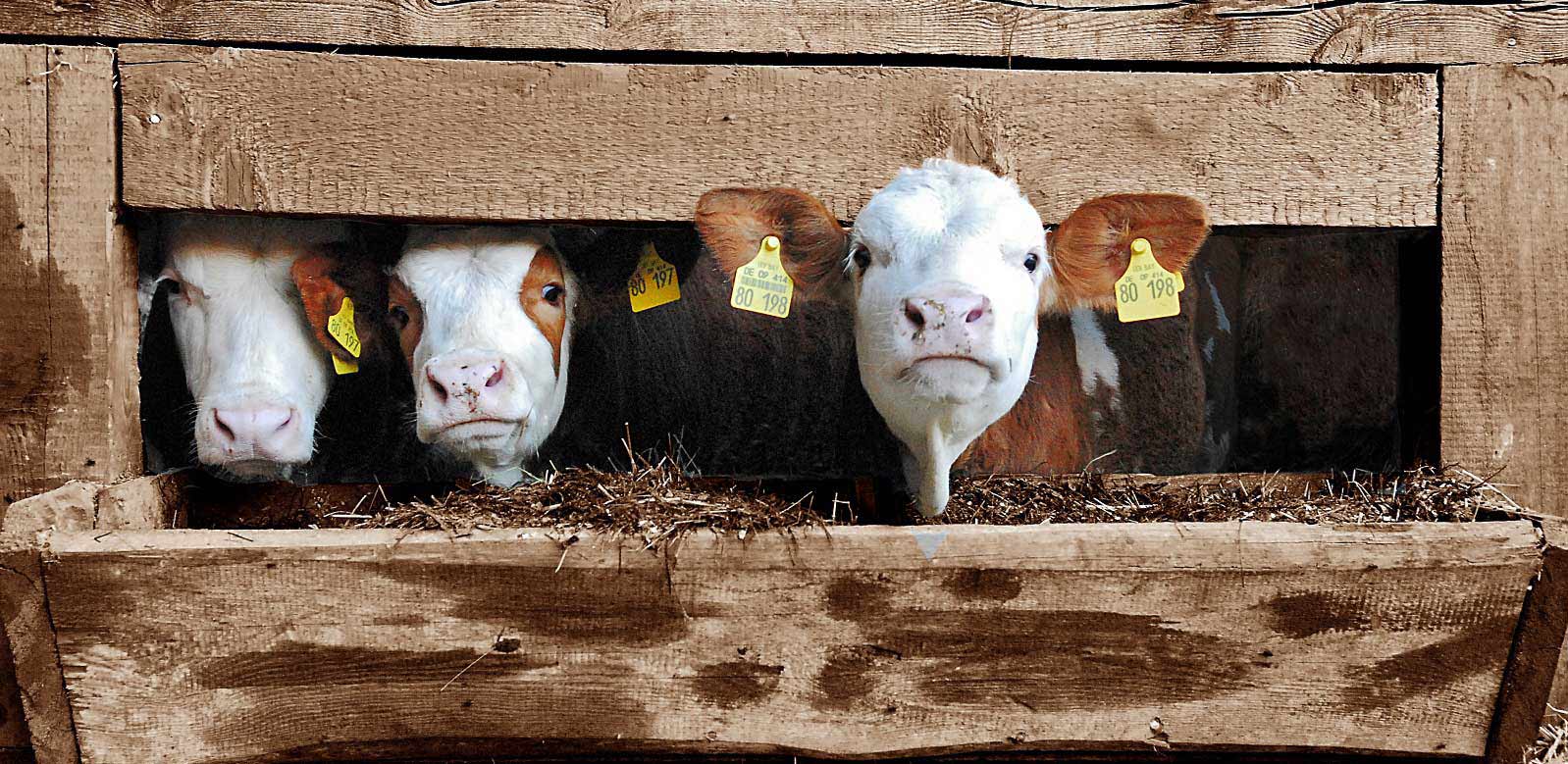Coughing calves? How to save costs and prevent respiratory disease

By Judith Schmidt, Product Manager On Farm Solutions
There will always be germs in barns. Yet, calves are particularly susceptible to lung viruses and bacteria that attack the respiratory systems. What can we do to prevent calf flu?

Coughing in calves is one of the most obvious signs of illness. It should be taken seriously – calves are important for the profitability of farms. Calf flu not only leads to treatment costs but also has long-term consequences, such as weak daily gains, delayed lactation, lower milk yield, reduced fertility, and increased susceptibility to other diseases.
Respiratory disease in calves: recognize the symptoms and protect their lung health
Calves are much more sensitive to respiratory diseases than many other animals. Why? One major cause is that calves are born with immature lungs. The lungs are only fully developed at about one year of age. In addition, calves generally have small lungs relative to their body size. Furthermore, the immunological gaps around the second month of life are decisive. During this phase, the number of maternal antibodies in the calf´s blood decreases, while the calf´s own immune system is still slowly building up.
Symptoms of calf flu
1) Cough
A very easy-to-recognize sign of a developing calf flu is coughing. Coughing can also be caused by changes in weather, stress, or an unsuitable barn climate, but coughing should always be monitored, and animals should be checked for other symptoms.
2) Respiratory distress
Sick calves breathe heavily and show an increased respiratory rate. Even at rest, this can be more than forty breaths per minute, ranging from a slight acceleration of breathing to severe respiratory distress and breathing through the open mouth. Mouth breathing can be the first indication of lung damage.
3) Eye and nose discharge
Calf flu not only shows its symptoms in the internal respiratory tract but also in the eyes and nose through clear, watery discharge. In later stages, bacterial infections can also cause purulent discharge. The animal’s gaze is not clear and rather “sleepy.”
4) Body posture
Calf flu often manifests itself by drooping ears or an overall low head posture, as the calves are dull and weak. They are inactive and separate themselves from the group. They also lie down and standing up is delayed.
5) Reduced water and feed intake
Due to their physical condition, animals suffering from flu tend to take in only little feed and water or do not eat and/or drink at all. The logical consequence is a weakening of the animals. In case of doubt, one should actively water and feed the animals.
Economic significance of respiratory disease in calves
Influenza in cattle and calves is a herd disease and often causes serious financial losses. Losses are caused by pronounced performance decreases, developmental disorders of the animals, and treatment costs. Significantly reduced daily gains have been demonstrated for fattening animals.
Next to diarrheal diseases, calf flu causes the highest treatment and follow-up costs for calves. A study by the Chamber of Agriculture of Lower Saxony (Germany) found that farmers had to spend between 83 and 204 euros per sick calf, depending on the severity of the disease.
4 tips to save costs and tackle calf flu with less antibiotics use
1) Offer a stable climate
Warm, damp barns, as well as overcrowded and poorly ventilated ones, weaken the calf´s defense mechanisms. Temperature fluctuations of more than 10°C between day and night also favor the development of calf flu. It is important to keep the calves’ environment free of dust and draughts. This can be achieved by adjusting the air exchange rate.
In addition, the humidity in barns without a heating system should be between 60 and 80 percent. Data loggers help to keep an eye on the climate in the barn. They make it possible to check how the outdoor climate and ventilation affect the climate conditions in the barn.
2) Hygiene-sensitive calving management
Attention should be paid to calving management. The long-term health of the animal is already predetermined in the calving pen. If several cows calve at the same time or if calving pens are not mucked out regularly, harmful germs will accumulate. In other words: if a calf is born into a dirty box, it will absorb many germs through its mucous membranes.
3) Avoid stress
It is crucial to minimize stress from causes such as transport, re-housing, feed changes, group formation, dehorning, and weaning. These events should be spaced out as far as possible and should never occur simultaneously.
4) Prevention through supplementary feed
In the winter months, when the weather is cold and damp and constantly changing, calf flu incidence skyrockets. Now, it is imperative to strengthen the calf´s respiratory tract from the beginning. EW Nutrition’s Bronchogol Liquid is a herbal concentrate that supports respiration and stabilizes the physiological defense system in the respiratory organs.
Bronchogol liquid supports young calves in stressful situations, such as critical weather transition periods (autumn-winter; winter-spring) and housing changes, and when they suffer from calf flu. The product is based on a proprietary mixture of phytomolecules. By stimulating the cilia in the respiratory tract, the phytomolecules promote the transport of mucus and facilitate expectoration.